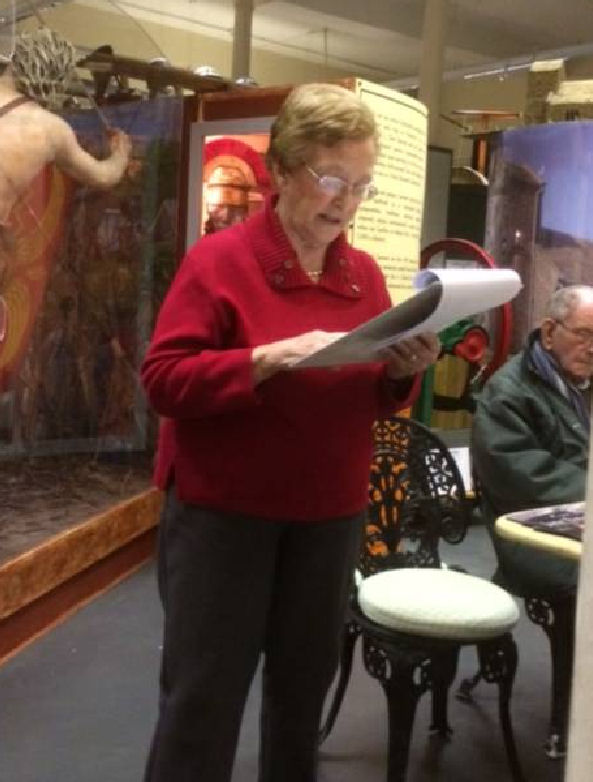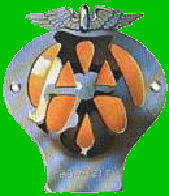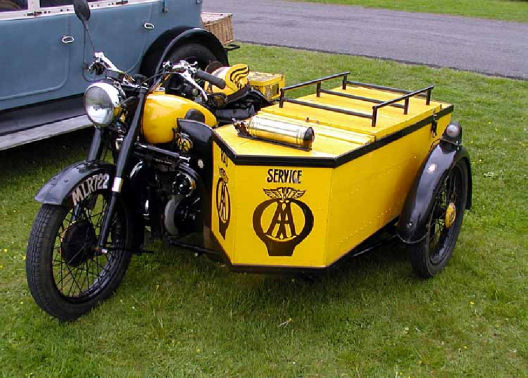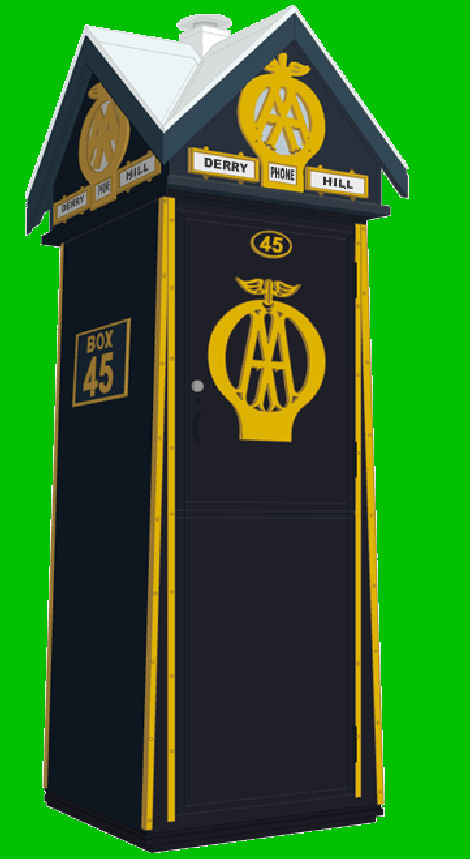Dates for your Diary
Ongoing – WW1 Exhibition in the Museum
Saturday 14th April – Coffee Morning – ‘Navy Day’ – all things nautical!
Monday 16th April 1pm – Annual luncheon, this year at Llanhilleth Institute. Guest speaker Mr Jack Hanbury.
Saturday 19th May – Coffee Morning - Hobbies and Crafts
Saturday 16th June – Coffee Morning - Aberbeeg Hospital
Saturday 21st July – Coffee Morning - School Days
March 100 Club Winners
No. 19 Huw Bearcroft £20
No. 112 Lauren Dean £10
Coffee Morning
 We had a very entertaining coffee morning in March. As well as the usual chat over coffee and cake, Mrs Margaret Cook told us the story (and legends!) of St David, Patron Saint of Wales - fascinating stuff! Sharon Saunders followed that up with a St David's theme quiz. Add in a raffle and you'll see we had a busy morning. Why not come along to our next coffee morning on 14th April which will have a nautical theme and draw on some of the items in the museum's collections.
We had a very entertaining coffee morning in March. As well as the usual chat over coffee and cake, Mrs Margaret Cook told us the story (and legends!) of St David, Patron Saint of Wales - fascinating stuff! Sharon Saunders followed that up with a St David's theme quiz. Add in a raffle and you'll see we had a busy morning. Why not come along to our next coffee morning on 14th April which will have a nautical theme and draw on some of the items in the museum's collections.
Change of Opening Hours
We are very sorry to have to announce that from 1st May the museum will close on Tuesdays and Wednesdays other than for organised visits. We have a wonderful museum which is full of objects, photos, printed material and more, which tell the rich story of Abertillery and its people. We can't afford to lose it but neither can we afford to open five days a week. Our expenses are going up but our income has been going down. Please help. Every £1 counts.
Why not:-
- Join the Museum Society (annual fee £6 member, £25 Vice President)
- Join our 100 Club, just £1 per month and the chance to win cash prizes
- Come to our coffee mornings to enjoy refreshments and entertainment for just £1
- Use our cafe
- Buy presents from the museum gift shop
- Visit the museum and leave a small donation.
We really need your help. Please spread the word. Jen Price, Treasurer
The AA
 I renewed my membership of the AA recently (the Automobile Association, not the other one) and that started me thinking about how long my family had been members. Then I wondered how the AA had come to be set up in the first place?
I renewed my membership of the AA recently (the Automobile Association, not the other one) and that started me thinking about how long my family had been members. Then I wondered how the AA had come to be set up in the first place?
My father bought his first car in 1960 and as cars weren’t as reliable as they are now, he joined the AA. Membership came with a key to open those AA emergency telephone boxes scattered around the country, a handbook, and a rather splendid metal badge to be affixed to the radiator grill. In those days, many of the AA men drove around in sidecars and would salute when they spotted an AA badge.

Just a couple of years after getting the car, my parents decided to drive to the south of France for our annual holiday – quite an adventurous undertaking in the days when there were no ‘holes in the wall’, no credit cards, no mobile phones. The AA supplied us with an incredibly detailed route guide which got us safely to our destination. They also supplied a handy phrase book. This was no ordinary phrase book as it contained pages of diagrams of car engines and parts and technical phrases. My goodness, but was that phrase book useful. We could get by from day to day with my schoolgirl French but when the car developed a fault, that phrase book from the AA was invaluable. With its help, the fault was identified and a spare part ordered and fitted. Well done the AA even if now I moan a bit about the cost.
 How did the AA start? Well it started as a rather elitist organisation (perhaps necessarily so given the small number of cars) in 1905 with 100 members and its main purpose was to warn members of speed traps and to help motorists who had broken down. The AA’s ‘patrolmen’ initially worked only at weekends and mainly used bicycles. The organisation rapidly expanded in terms of members and services, including the issue of hand-written route guides in 1910, and by 1914 there were 83,000 members and around 1000 staff. The AA was also expanding its activities to offer insurance, appointing authorised repair garages, inspecting and grading hotels, erecting road signs and issuing an annual handbook. The AA is still around and so it must be doing something right.
How did the AA start? Well it started as a rather elitist organisation (perhaps necessarily so given the small number of cars) in 1905 with 100 members and its main purpose was to warn members of speed traps and to help motorists who had broken down. The AA’s ‘patrolmen’ initially worked only at weekends and mainly used bicycles. The organisation rapidly expanded in terms of members and services, including the issue of hand-written route guides in 1910, and by 1914 there were 83,000 members and around 1000 staff. The AA was also expanding its activities to offer insurance, appointing authorised repair garages, inspecting and grading hotels, erecting road signs and issuing an annual handbook. The AA is still around and so it must be doing something right.
Of course things change, the saluting was phased out in the early sixties, bicycles went (and came back!), vans were introduced……the changes are myriad, especially in these days where so much is available on-line (such as this information about the history of the AA).
I’m sure other people have tales to tell about their motoring adventures – why not share them?
Jen Price
Fusilier Shenkin IV
You may have read recently of the problems the 3rd Battalion The Royal Welsh had in catching the wild goat they had selected to be their replacement regimental mascot. Clearly it was an honour the goat in question was keen to avoid, preferring to continue romping around the Great Orme to standing to attention at official parades, even if he travelled to them in his own air-conditioned trailer. The goat’s determination to evade capture encouraged the army to feel they just had to have this particular goat given that he was clearly stealthy, fleet of foot and elusive – just the right qualities for a modern soldier. The ‘new’ goat was needed when the previous goat died last September

Did you know that the Royal Welsh and its predecessor units have adopted goats as mascots since the 1770s? Why? Well there are a number of stories but the most popular explanation is that during the Crimean War a young Welsh soldier found a kid goat and kept him as a pet. While on sentry duty one night the soldier tucked the goat inside his coat to keep warm and fell asleep but was alerted to the enemy advance by the goat bleating. The soldier was able to rouse his fellow soldiers and the Russian attack was repelled.
In 1884 (or 1844 depending on which internet site you use) Queen Victoria presented the regiment with a Kashmir goat from the royal herd, thus starting a tradition which persists to this day, as does the practice of giving the goat a rank such as Fusilier or Lance Corporal. The Kashmir goats on the Great Orme belong to the Crown and the Queen’s permission was needed to take Shenkin IV – something he clearly didn’t appreciate.
Going back more than a century, there was a discussion in Parliament in 1903 as to whether the Regimental Goat, returning to Southampton from South Africa, should be slaughtered under the requirements of the Diseases of Animals Act and, if so, what should happen to the head and horns!
Jen Price
Concorde
December 11th 2017 marked the 50th anniversary of the launch of Concorde. And what a feat of engineering she was and she is still one this country’s greatest achievements.
The project was first conceived in 1956 but because of huge costs, in 1962 France was invited to work jointly on the programme.
It had been agreed between Britain and France that Concorde would be spelt the French way, however after Charles De Gaulle vetoed Britain’s membership of the Common Market in 1963, the British Government of the day, in an act of revenge, took the decision that, on this side of the Channel at least, it would be spelt without the ‘e’. However, just before the ceremony in Toulouse in 1967, Tony Benn took it upon himself to restore the ‘e’, claiming it stood for ‘Excellence, England, and Europe’. However it could be argued that it was a humiliating defeat at the hands of De Galle.
Concorde’s first commercial flight was in January 1976 when it flew from London to Bahrain. It was hoped that Concorde would herald a new era in air travel but it was beset with problems from the outset. Firstly, with its moveable drop down nose, it had been extremely expensive to develop, build and test; indeed it was the most vigorously tested aircraft of all time going through in excess of 5000 hours of flying time before being allowed to carry a single paying passenger. It also used a lot of fuel and the price of oil had risen very steeply in 1973, adding to its running costs.
But perhaps the biggest problem was its noise level – not for the passengers onboard, but those on the ground. Travelling at twice the speed of sound, as it passed through the sound barrier, a loud ‘boom’ could be heard on the ground. This caused many a country to ban Concorde from flying through their airspace. It wasn’t even allowed to fly domestically either because of objections in this country and so it was confined to the transatlantic route and even then it was only allowed to go ‘supersonic’ once over the Atlantic ocean. It took just 3 hours to get to New York on Concorde, as opposed to 8 hours of normal flight, which meant that, with the time difference as well, you could arrive in New York, 2 hours before you left London! But with its high running costs and small passenger capacity it was only for the rich and famous.
Around the same time of Concorde’s launch, Boeing launched its Boeing 747, the ‘Jumbo Jet’ which, while much slower, could carry 500 passengers compared to Concorde’s 100 and so was much cheaper for the ordinary passenger. The Jumbo Jet is still as popular today. Beset with all these problems, Concorde failed to achieve any sales and only 20 were ever built and only 14 of those built went into service, 7 with British Airways and 7 with Air France.
Then came the disastrous air crash at Charles De Gaulle airport on 25th July 2000 killing all onboard and four on the ground Prior to this crash, Concorde had an unblemished record of air safety. An investigation into the crash later showed that a piece of debris, left behind on the runway by another aircraft had been picked up by one of the Concorde’s tyres, causing the tyre to burst. A piece of burst tyre then flew up and hit the underside of the plane where it caused the (full) fuel tank to ignite. The rest, as they say, is history. Although modifications were made to the tyres and underside of the plane, the damage had been done and with reduced confidence in the plane, passenger numbers fell away and Concorde flew its last flight on 24th October 2003.
During the 1970’s I was lucky enough to go on board a Concorde with my parents and sister. It was at Cardiff airport (or Rhoose as it was then known). It was on show for members of the public to view. I remember being un-impressed with the cabin which had two seats either side of a small aisle and was considerably smaller than the Boeing jets I had been accustomed to flying in. I do recall seeing the cockpit though and was in awe of the vast array of switches and dials and can clearly remember the Captain offering 50p to the first child to spot the clock and, needless to say, no-one did! Once back in the airport terminal I bought a small metal pin badge of Concorde which I then lost while on a similar tour of the QE2, but that’s another story…!
Sally Murphy
Get Well Soon
Mrs Margaret Dyer, the museum’s secretary and volunteer helper, is making a good recovery following her recent operation. We wish her well and look forward to seeing her back at the museum in the very near future.
Museum Matters
When I was researching for the museum books I could not get my head around some of the Newspaper reports; The Monmouthshire Merlin reported, that men were being arrested for being absent from their workplace without good reason. Not attending work was a breach of contract and the person or persons could be arrested and in some cases they were sentenced to hard labour. This was a deterrent and a way of breaking strikes as a case in the Monmouthshire Merlin shows.
The Monmouthshire Merlin
A workman in Blaina who had been absent from his place of work was arrested by a Special Constable, the constable took the man to his own home with a view to bringing him before the magistrates on the following morn. After he handcuffed him to the table leg he proceeded to imbibe in a particularly potent cordial after which he locked and bolted the kitchen door and retired to bed. When he arose the following morning he found that the bird had flown. To effect his escape he had used the tools from a box in the kitchen, sawing through the table leg. To gain exit he had taken the hinges off the door, these being made of brass and of considerable value he took with him… Not surprisingly he was never seen in the area again.
Vivid accounts exist of attacks on coal wagons during the strike of 1822. The strikers knew that as long as the Ironmasters could obtain their coal supplies they could hold out against them, hence the desperation and anger of the colliers which boiled over on the 2nd of May. It had been known for some time that large quantities of coal waiting at the head of the Monmouthshire Canal at Crumlin was to be taken the 10 miles up the Ebbw Valley to the Iron Works of Messers Harford & Co. To prevent trouble soldiers were stationed at both ends of the route.
The horse drawn wagons set out from Crumlin at about 10am. Prior to this a scouting party of the Chepstow Yeomanry (‘The Greys’) had been sent ahead to prevent the destruction of the railroad. They had gone less than a mile and having scattered the colliers, the convoy could now move forward but progress was slow because the road had been torn up in places and timber placed across the lines. About 2 or 3 miles from the previous ambush the workmen once again attacked, rolling large stones down the hillside striking Edward Frere* the fiery Ironmaster of Clydach Ironworks. The Greys dismounted, clambered up the hills and shot several of the mob. The battle was over and for the last few miles to Ebbw Vale the soldiers kept to the high ground, until the coal finally arrived at the Iron Works at 9pm.
Throughout the night, noisy bands of men could be heard on the hillsides overlooking the mining towns. They damaged over 30 coal wagons pushing some into the Monmouthshire canal reservoir at Llanhilleth and burning their contents. One bonfire was still smouldering four days later. There were similar incidents in other areas during the weekend. In the late hours of Sunday and early hours of Monday the iron plates and stone blocks of a ½ mile of the Sirhowy Tram Road were ripped up and thrown into the river. There was destruction without parallel in the history of the coalfield. The owners and combines saw the opportunity to make even more money from their large workforce by opening shops called ‘Truck Shops’ which by coercion the workers were forced to use (the workers were paid in tokens rather than money and these tokens could only be used in the company’s Truck Shop). This state of affairs bred resentment and even the moderates started looking towards more physical ways to change things, hence the emergence of the Chartists and the even more violent Scotch Cattle movement.
Inflammatory tracts were circulating in the district, and the leaders in the late Penderyn disturbances were familiar with these tracts and retained some of their ideas of organisation after the strike of 1830 and through the revolt of 1832. The immigrant workers from Shropshire, Derbyshire, Staffordshire, etc., who were used to trade unions prior to coming to South Wales, aided the Welsh and their old leaders to build up what was at first a secret organisation. Although trade unions had been made legal organisations in 1824, the determination of the employers to keep the workers uncombined and at their mercy, still prevented these organisations from having an open existence. The time was ripe for such an organisation and for the development of such a movement throughout South Wales. The truck system still remained in operation, and, coupled with bad trade and low wages, made the conditions quite intolerable.
In 1831, the government passed the Truck Act to prevent the exploitation of workers by this method. At an enquiry in Cardiff on the workers’ strike at Cwmtillery over the Company Truck Shop, evidence was given that the South Wales Colliery Company had such a shop. In its defence, the companies managing Director Colonel Lawrence Heyworth said that it was a co-operative with shares being offered to the workmen but as they (the workers) had not bought any shares, the company directors bought them up. (The fact that no workman could afford the shares being the reason for this). In the evidence, it was stated that the strength of feeling was such that: The women threatened to stone the men if they returned to work. The workers failed to obtain redress by one method, but their conditions spurred them on to attempt new methods.
Thanks to Professor Madeline Grey for her expertise and teaching me how to research articles.
Thanks also to Jane Henderson for her continued support and advice  since I became Curator.
since I became Curator.
Don Bearcroft
Curator
*Edward Frere was the father of Sir Henry Bartle Frere who was to become the Governor of Cape Colony in South Africa, and who was one of the instigator’s of the Zulu War.
Top Of Page
